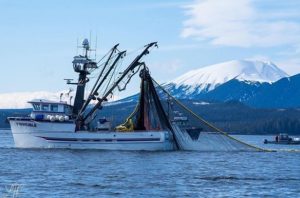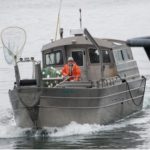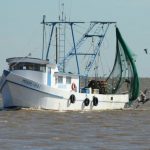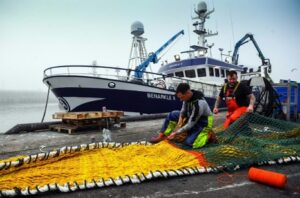Mass DMF’s On-Demand Fishing Gear Economic Modeling Report Released
 DMF’s On-Demand Fishing Gear Economic Modeling Report Released
DMF’s On-Demand Fishing Gear Economic Modeling Report Released
The second phase of a multi-year project evaluating the operational, technological, legal/regulatory, and socioeconomic challenges and opportunities of alternative lobster gear is complete.
The Massachusetts Division of Marine Fisheries (DMF) has completed the second phase of a two-year project, funded by the National Fish and Wildlife Foundation in partnership with the National Oceanic and Atmospheric Administration, to develop the first-of-its-kind evaluation of the operational costs of on-demand fishing gear technology by Massachusetts lobster fishermen.
On-demand fishing gear, commonly known as ropeless fishing gear, replaces traditional vertical buoy lines, which can result in entanglements with marine mammals including North Atlantic right whales, with new gear retrieval and marking methods. Most on-demand fishing gear systems consist of submerged buoyancy devices that are activated using time-release mechanisms or acoustic signals transmitted from the surface.
Previous economic studies focusing on on-demand gear have assessed the costs of purchasing the equipment, determining that outfitting the Massachusetts fishing fleet with the gear could cost tens to hundreds of millions of dollars. In our new report, Estimating the Costs of Using On-Demand Gear in Massachusetts Lobster Fisheries, we took a deep dive into the financial impacts of using the gear onboard lobster fishing vessels. The report, authored by DMF contractor Noah Oppenheim of Homarus Strategies LLC, Dr. Robert Griffin of SMAST, and Dr. Andrew Goode of the University of Maine, presents a new model that can be used to estimate these operational costs, providing important information that will assist in the consideration of fishery management scenarios involving entanglement risk-reducing fishing gear.
Because some types of on-demand gear require significantly more time to operate than traditional vertical line gear, the costs of using it were shown to be as high as the purchase price of the gear itself in many cases. The study estimates that a full transition to on-demand gear in Massachusetts lobster fisheries in the second half of the last decade would have resulted in a $40 million decline in lobster fishery revenue each year, or 3.5 million fewer pounds of lobster landed. The most significant cost impacts would be felt by the smallest fishing vessels operating closest to shore.
The Healy-Driscoll Administration, Massachusetts DMF, the Massachusetts Legislature, and the US Congress have each invested significant time, energy, and resources into studying on-demand fishing gear and achieving right whale conservation targets. As additional types of on-demand gear are developed and systematically tested, our new economic model will provide valuable information to assess costs and benefits to keep our iconic lobster fisheries sustainable and prosperous.
If you would like to learn more about this project, please contact [email protected]. For more information about DMF’s on-demand gear research and other protected species conservation programs, click here.
 |
|
Massachusetts Division of Marine Fisheries (617) 626-1520 | Contact Us | Find a Location |
    |












































Leave a Reply